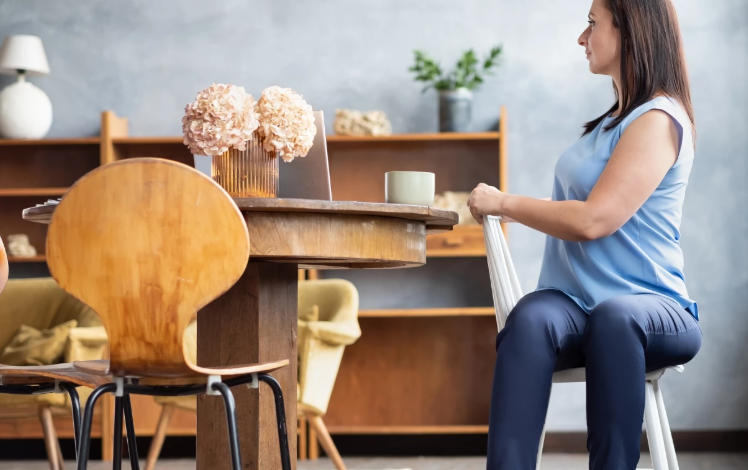Best Chair Yoga Practices for Improved Flexibility and Comfort

Best Chair yoga offers an accessible way for people of all fitness levels to experience the benefits of yoga without the need for floor exercises. It helps improve flexibility, strength, and mental calmness while providing support and stability through the use of specialized chairs. Choosing the right chair is crucial for safe and effective practice.
The best chair for chair yoga combines comfort, durability, and proper support to enhance poses and prevent injury during practice. Options vary from foldable auxiliary chairs designed to assist with challenging postures to ergonomic chaise lounges that support relaxation and gentle stretching.
Finding a chair that fits an individual’s specific needs can transform their yoga experience, making it easier to maintain correct posture and focus on breathing. As chair yoga grows in popularity, understanding these designs helps practitioners pick the ideal support for their routines.
Top Chair Yoga Poses and Techniques
Chair yoga includes specific poses and methods to enhance strength, flexibility, and overall well-being. It focuses on accessible movements, proper alignment, and controlled breathing, all adapted to be done while seated or with chair support.
Essential Chair Yoga Poses
Several core poses form the foundation of chair yoga. Seated Cat-Cow improves spinal mobility by alternating between arching and rounding the back. Seated Forward Bend stretches the lower back and hamstrings safely.
Chair Pigeon targets hip flexibility by crossing one ankle over the opposite knee while seated. Seated Twist promotes spinal rotation and digestion. Each pose emphasizes slow, controlled movements to avoid strain.
Adding Seated Mountain Pose encourages proper posture by engaging the core and lengthening the spine. These poses can be adapted for various fitness levels, ensuring inclusivity for seniors, desk workers, and those with limited mobility.
Techniques for Beginners
Beginners should begin with gentle movements and focus on breath coordination. It’s important to start with a stable, sturdy chair without wheels to maintain balance.
Maintaining an upright posture and keeping feet flat on the floor helps provide a secure base. Beginners should move slowly and avoid pushing into pain or discomfort. Using the chair back for support when stretching improves safety.
Consistency and short sessions of 10-15 minutes, practiced several times a week, help build strength gradually. It’s advised to learn poses with guidance from qualified instructors or instructional videos.
Chair Yoga for Flexibility
Chair yoga increases flexibility through controlled stretching of key muscle groups. Regular practice improves range of motion in the hips, shoulders, spine, and legs.
Stretches like seated hamstring stretches and side bends lengthen muscles gently without overstressing joints. Movements are designed to respect individual limitations, especially in those with stiffness or arthritis.
Flexibility develops progressively by holding poses for about 20-30 seconds and repeating them twice. Slow transitions between movements prevent injury and allow deeper muscle engagement.
See also: Home Pest Control Services Vancouver: Effective Solutions for a Pest-Free Home
Breathing Practices in Chair Yoga
Breathing techniques are central to chair yoga and enhance relaxation and focus. Diaphragmatic breathing encourages deep breaths that fill the lungs fully while engaging the abdomen.
Box breathing—inhale, hold, exhale, hold, each for equal counts—calms the nervous system and increases oxygen flow. Coordinating breath with movement supports muscle control and rhythm.
Practicing mindful breathing during poses reduces stress and improves concentration. Breathing exercises can be done seated alone or combined with poses to optimize the benefits of each session.
Choosing the Best Chair for Yoga
Selecting the right chair for yoga involves examining key features, comparing common options, and ensuring safety during practice. Each factor directly affects comfort, support, and stability, which are crucial for an effective chair yoga session.
Features of an Ideal Yoga Chair
An ideal yoga chair provides firm support, stable footing, and proper posture alignment. It should have a flat, hard seat to avoid sinking, which can throw off balance. A backrest offers support but should not restrict movement.
Durability and materials matter. Chairs made from wood or sturdy metal frames are preferred for their stability. Non-slip feet or grips enhance safety by preventing movement.
Comfort features like slight padding or ergonomic contours help during longer sessions but should avoid excessive softness. Height suitability is essential; the feet should rest flat on the floor for proper posture and circulation.
Comparison of Popular Chair Options
Standard dining or office chairs are common but may not meet the specific needs of chair yoga. Rolling office chairs pose a risk due to mobility and soft cushions.
Wooden or metal chairs with stable legs and no wheels are preferred. Some specialized yoga chairs feature wider seats and a supportive backrest designed to promote correct alignment.
Ergonomic yoga cushions or chaises can complement a hard chair to add comfort without sacrificing firmness. Buckwheat-filled cushions offer adjustable firmness and breathability.
| Chair Type | Stability | Comfort | Posture Support | Mobility Risk |
| Rolling Office Chair | Low | Medium (soft) | Low | High |
| Wooden Dining Chair | High | Low-Moderate | High | None |
| Metal Frame Chair | High | Low-Moderate | High | None |
| Yoga Chaise Lounge | Moderate | High | Moderate | None |
Safety Tips for Chair Yoga Practice
Safety depends on a stable surface and proper chair choice. Avoid chairs with wheels or soft cushions that cause instability.
Ensure the chair is placed on a flat, non-slip surface. Check that it can support your weight without wobbling or tipping.
Engage slowly and maintain awareness of body alignment to prevent strain, especially for those with mobility challenges. If balance is a concern, use additional supports like yoga straps or wall anchors.
Inspect the chair regularly for loose screws or wear that could compromise stability.





